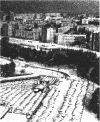Abstract
The Chernobyl Nuclear Power Plant accident, in the Ukrainian Soviet Socialist Republic (SSR), on April 26, 1986, was the first major nuclear power plant accident that resulted in a large-scale fire and subsequent explosions, immediate and delayed deaths of plant operators and emergency service workers, and the radioactive contamination of a significant land area. The release of radioactive material, over a 10-day period, resulted in millions of Soviets, and other Europeans, being exposed to measurable levels of radioactive fallout. Because of the effects of wind and rain, the radioactive nuclide fallout distribution patterns are not well defined, though they appear to be focused in three contiguous Soviet Republics: the Ukrainian SSR, the Byelorussian SSR, and the Russian Soviet Federated Socialist Republic. Further, because of the many radioactive nuclides (krypton, xenon, cesium, iodine, strontium, plutonium) released by the prolonged fires at Chernobyl, the long-term medical, psychological, social, and economic effects will require careful and prolonged study. Specifically, studies on the medical (leukemia, cancers, thyroid disease) and psychological (reactive depressions, post-traumatic stress disorders, family disorganization) consequences of continued low dose radiation exposure in the affected villages and towns need to be conducted so that a coherent, comprehensive, community-oriented plan may evolve that will not cause those already affected any additional harm and confusion.
Full text
PDF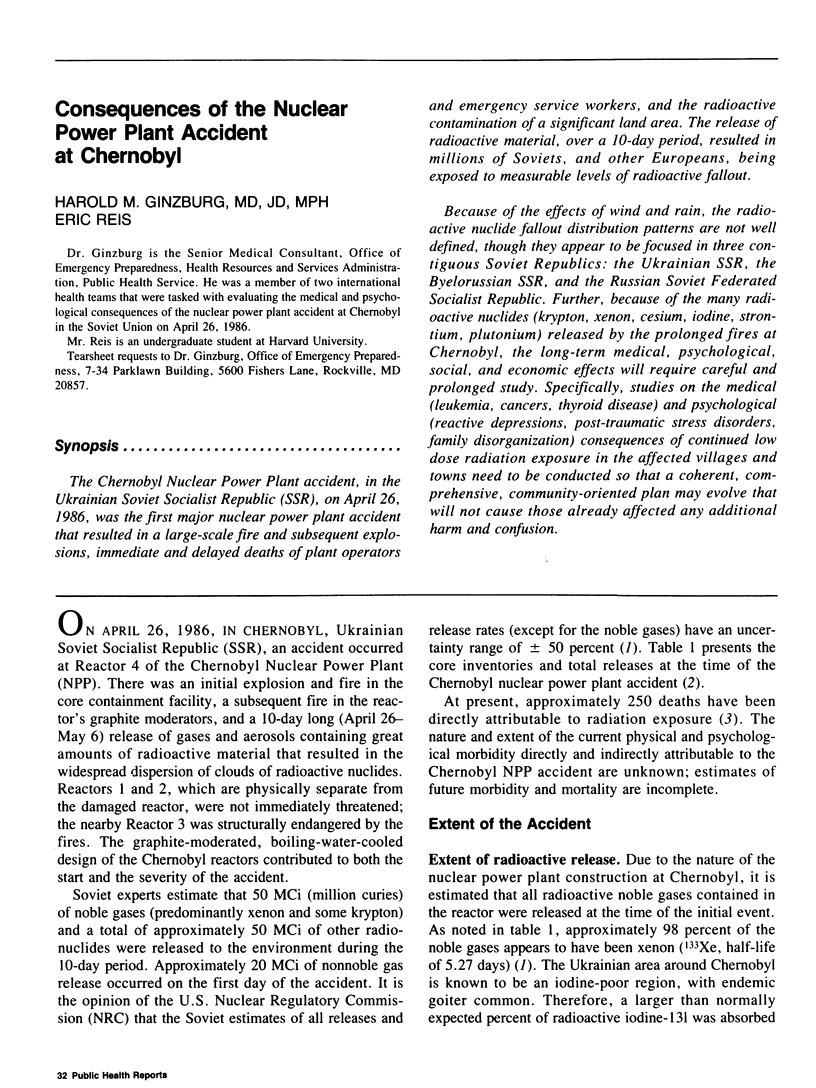
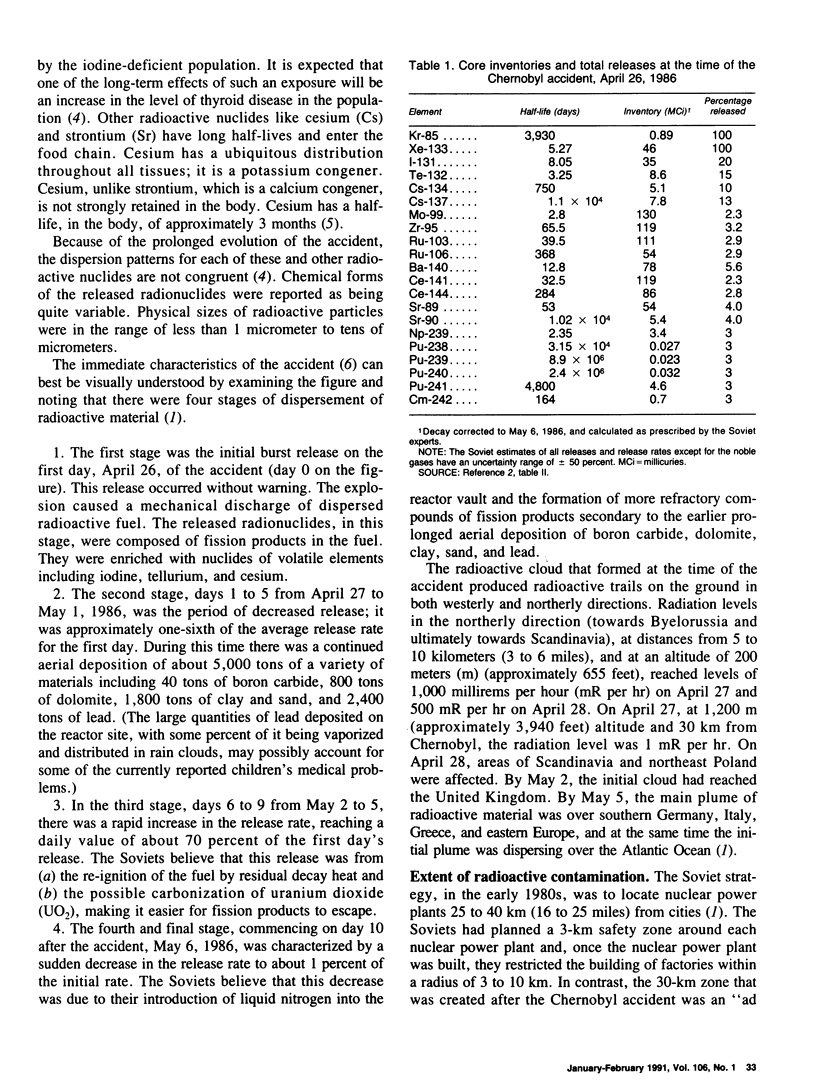
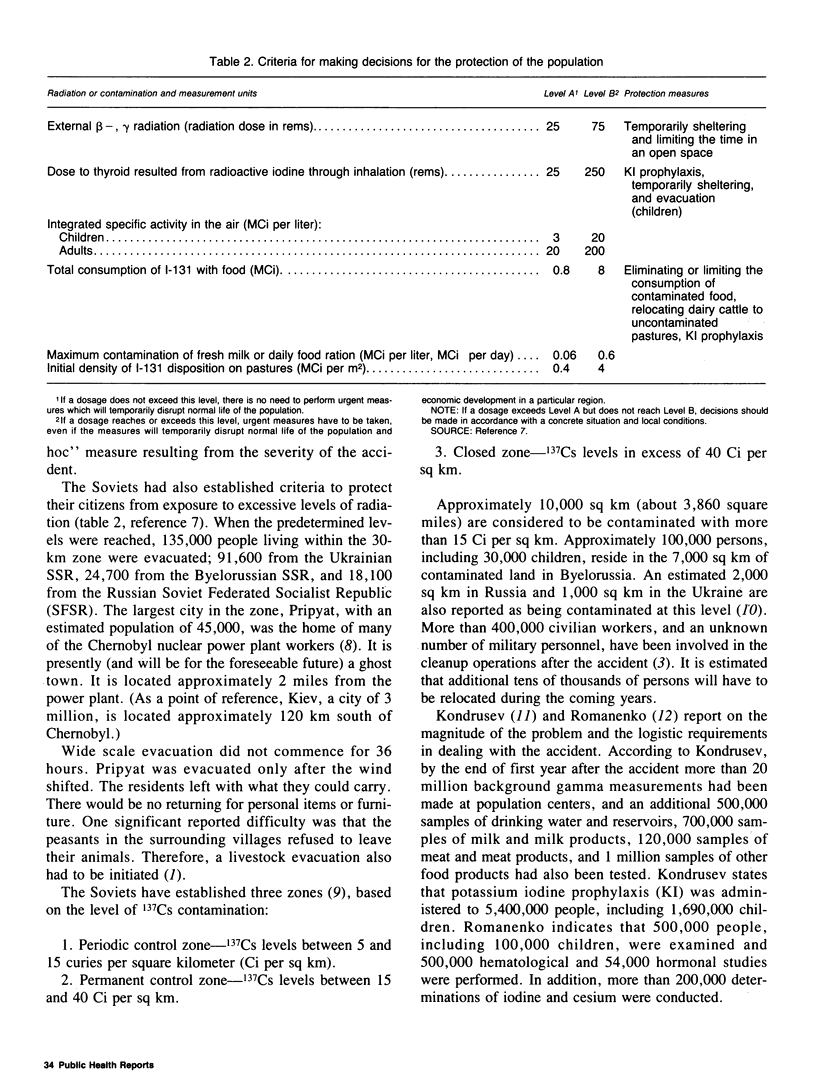
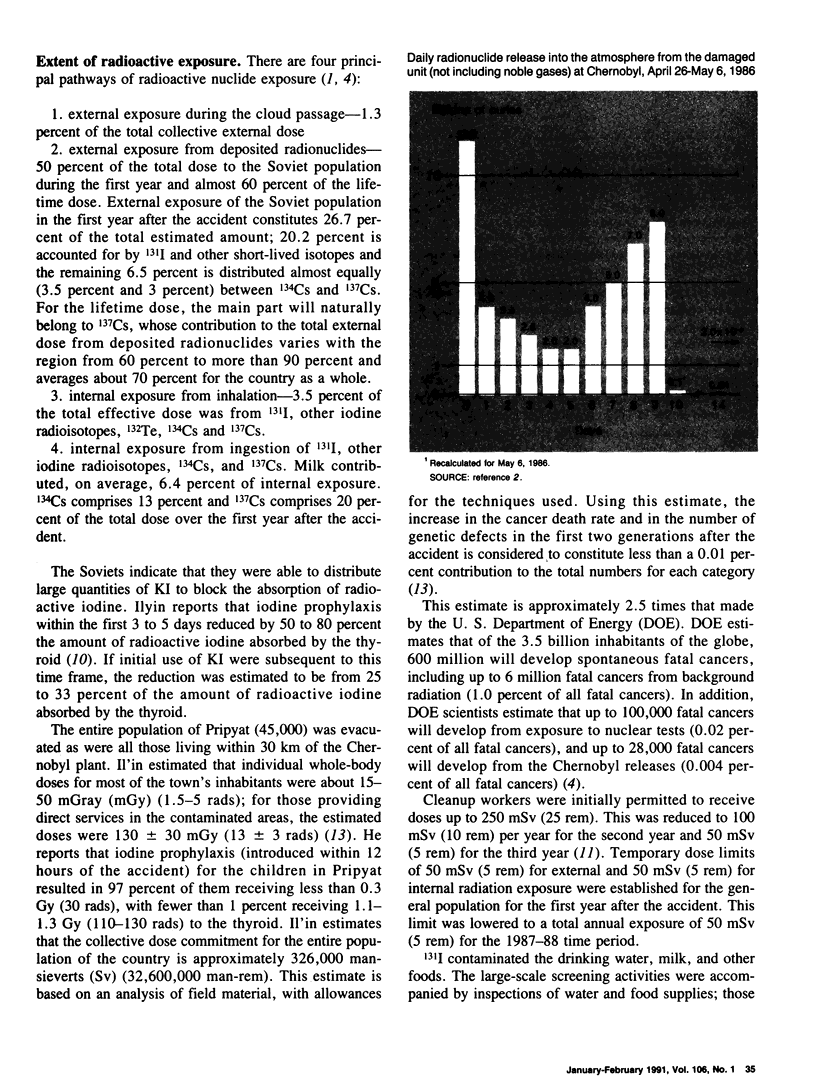
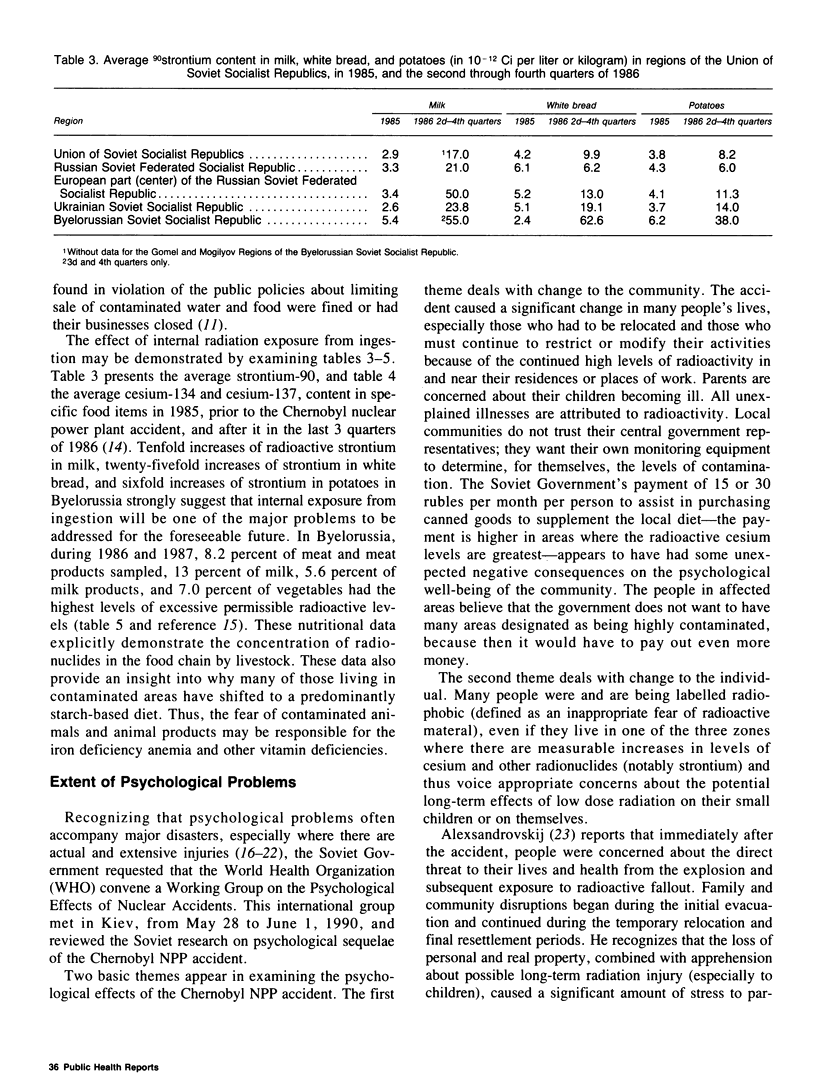
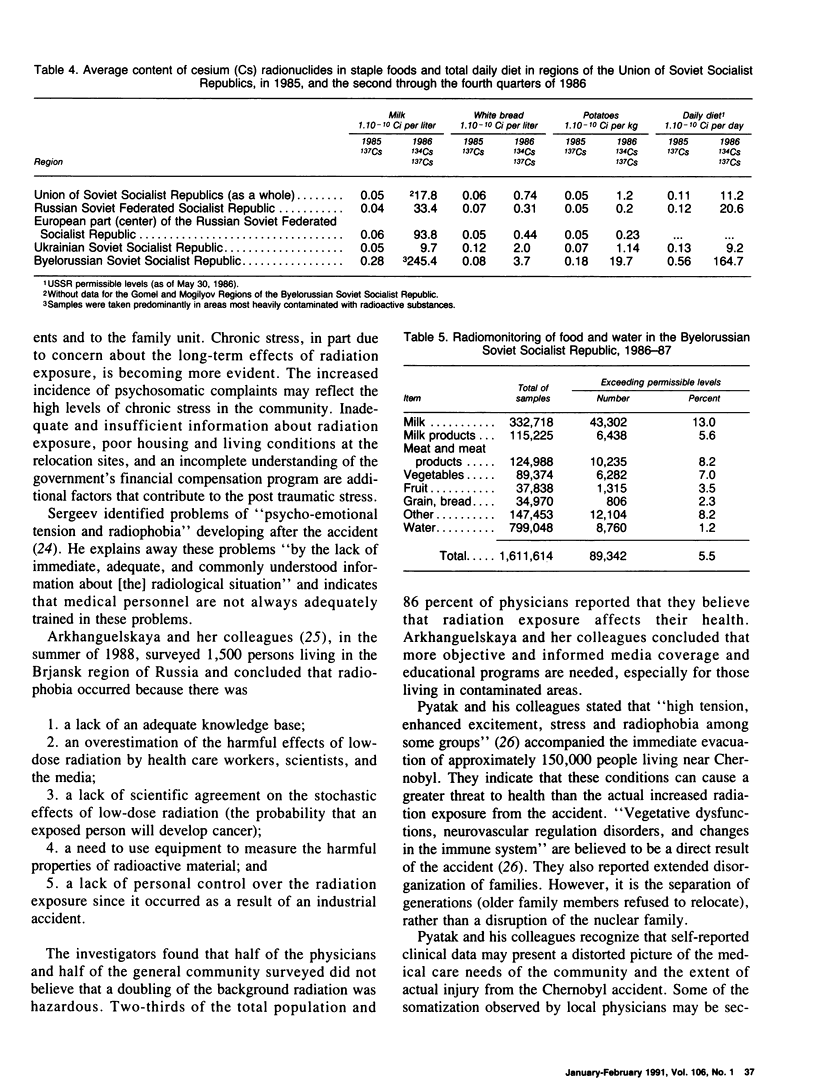
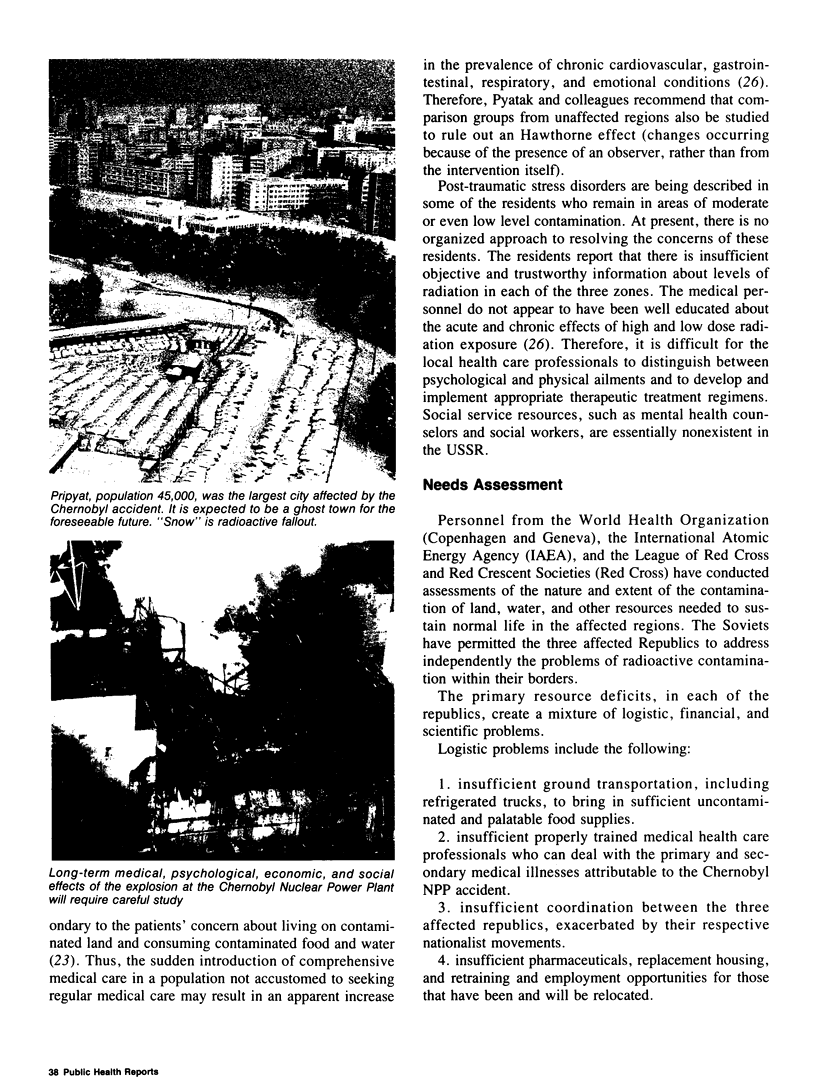
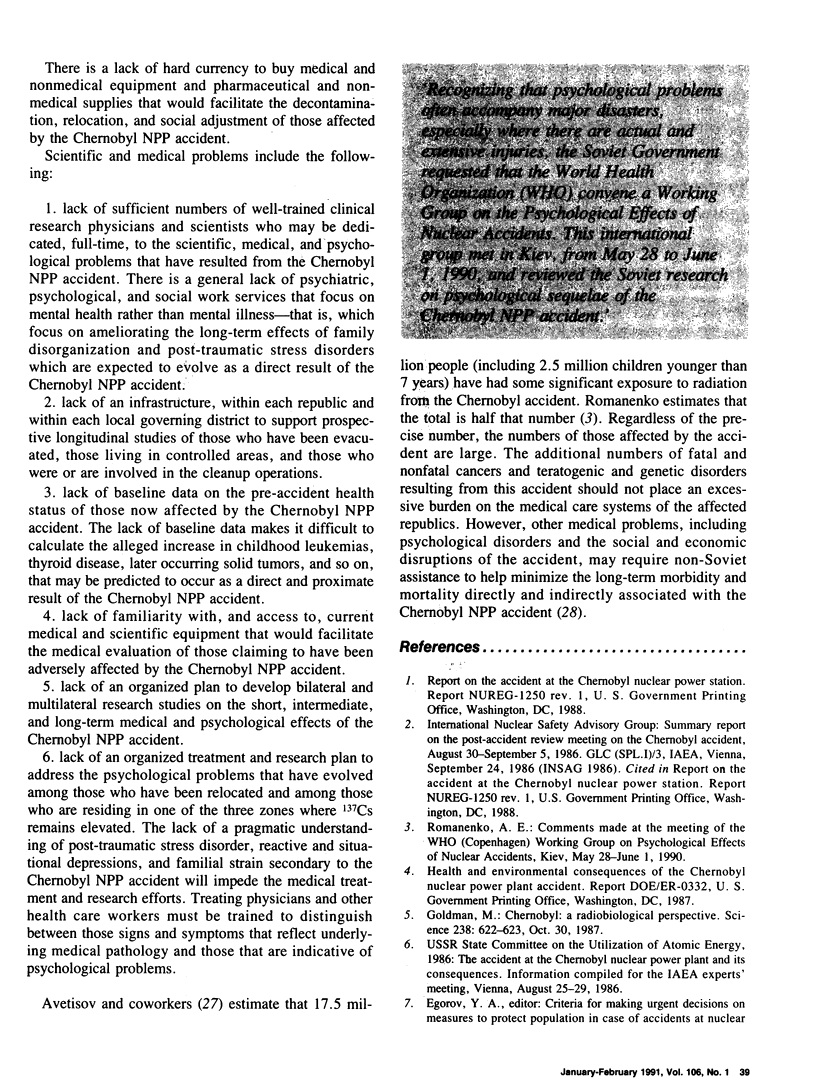
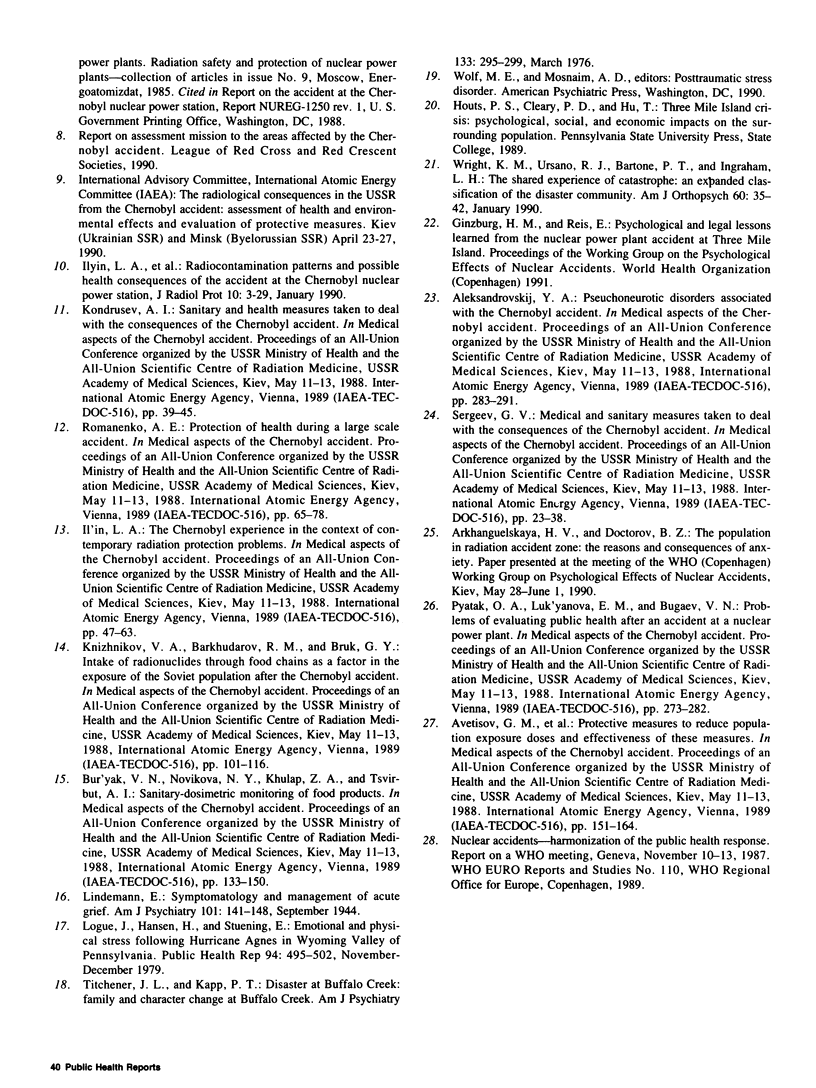
Images in this article
Selected References
These references are in PubMed. This may not be the complete list of references from this article.
- Goldman M. Chernobyl: a radiobiological perspective. Science. 1987 Oct 30;238(4827):622–623. doi: 10.1126/science.3672115. [DOI] [PubMed] [Google Scholar]
- Logue J. N., Hansen H., Struening E. Emotional and physical distress following Hurricane Agnes in Wyoming Valley of Pennsylvania. Public Health Rep. 1979 Nov-Dec;94(6):495–502. [PMC free article] [PubMed] [Google Scholar]
- Titchener J. L., Kapp F. T. Disaster at Buffalo Creek. Family and character change at Buffalo Creek. Am J Psychiatry. 1976 Mar;133(3):295–299. doi: 10.1176/ajp.133.3.295. [DOI] [PubMed] [Google Scholar]
- Wright K. M., Ursano R. J., Bartone P. T., Ingraham L. H. The shared experience of catastrophe: an expanded classification of the disaster community. Am J Orthopsychiatry. 1990 Jan;60(1):35–42. doi: 10.1037/h0079199. [DOI] [PubMed] [Google Scholar]



